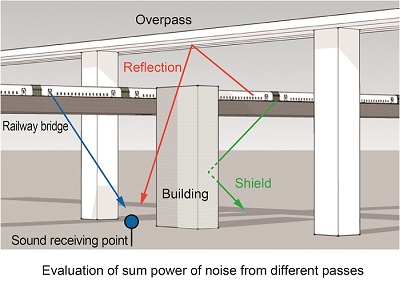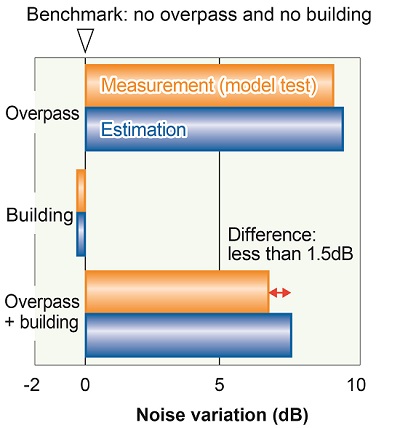20. Model for predicting wayside noise considering sound reflection from structures close to the railway track
In order to evaluate environmental impact assessments and countermeasures to reduce noise, it is necessary to have a model for predicting wayside noise which can be applied to various situations, whereas existing prediction models were mainly designed to estimate the noise from trains passing over viaducts.
Consequently, in order to extend the scope of application of these existing models, the influence of wayside structures such as cut slopes, overpasses and buildings, etc. on noise propagation was evaluated through model acoustic tests and actual running tests, and the results of these tests were used to build a new model.
A noise source model to be applied to cut sections was constructed, taking into account the noise reflecting and shielding effects of noise barriers, slopes and carbodies. Similarly, the model was applied to complex situations with overpasses and buildings, taking into account the noise reflection and shielding effects of the underside of overpasses and building fronts (Fig. 1).
Using a spread sheet software the influence of reflected sound was calculated as a reflection correction of a finite flat surface, and the influence of sound shielding was calculated as a shielding correction of multiple walls and rectangular barriers. The difference between resulting predictions made using this new model and results of actual model tests on the influence of an overpass and a building, were within 1.5dB, confirming the validity of the new model (Fig. 2).
The present model will make it possible to estimate noise even in complex conditions, with adjacent overpasses and buildings. It should also contribute to evaluation of countermeasures against noise when new overpasses or buildings are constructed in the vicinity of railway tracks.


